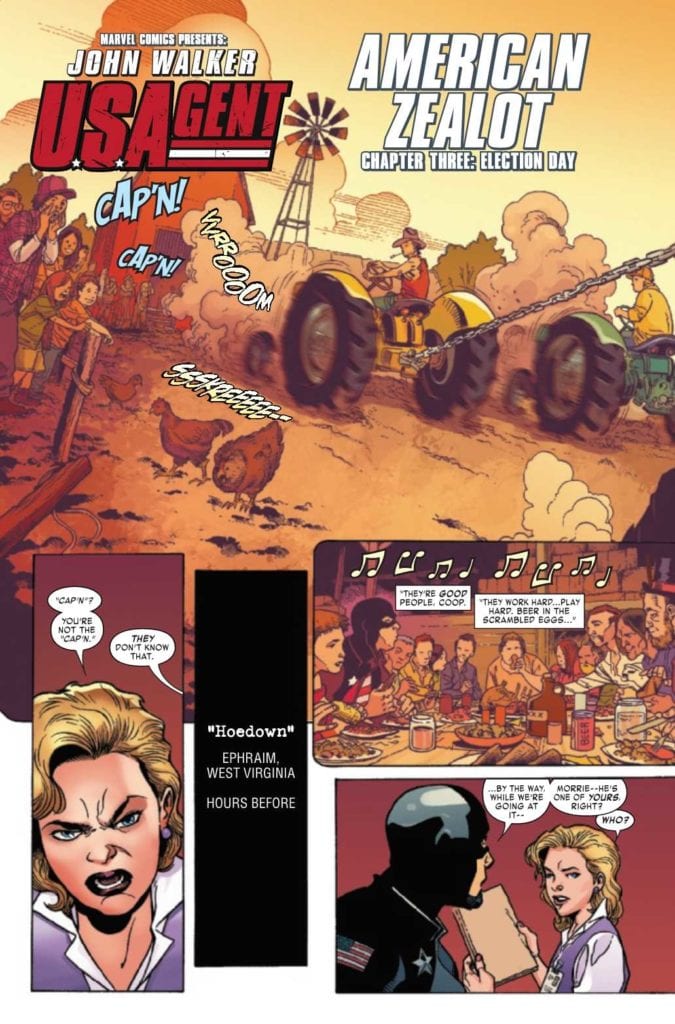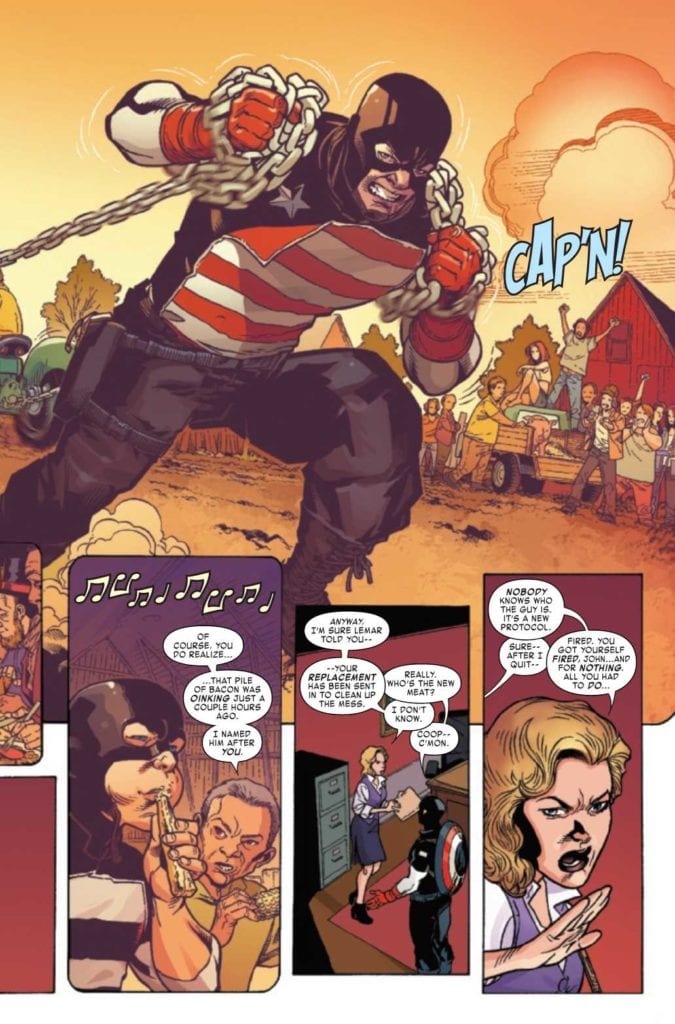U.S. Agent #3 comes out this week from Marvel Comics about a politically charged clash of American ideals. Christopher Priest continues to provide some smart commentary between America’s division through John Walker’s relationships. The creative team rocks this issue as well. Penciler Georges Jeanty gives weight to every interaction, inker Karl Story displays who has the most narrative weight, Matt Milla’s colors present an ever-changing mood to reflect the conflicts, and Joe Sabino’s letter work plays like notes for a song.
U.S. Agent #3: The American Zealot
After several buildups from the last issue, Priest takes the plot to detail John Walker’s relationships and how it relates to America’s division. By revealing how John’s loss of the U.S. Agent title was because of a misunderstanding that calls back to an increasing number of police riots, it comments about how instead of taking responsibility, officials are more willing to place the blame on who fail their expectations like police chiefs.
This brings out the central conflict with John’s sister Kate and his replacement as U.S. Agent (who is also her boyfriend). Kate and the “Saint” possess extremely holier-than-thou attitudes that come across as psychotic. Last issue, after her boyfriend kills her co-workers, Kate kisses Saint like it was foreplay. And the Saint beats (if not outright kills) black men like John’s ex-partner Lemar Hoskins (Battlestar) for failing to meet his expectations, which in Saint’s case, being a successful model minority. If these people replace John and the details behind it all are so secretive, what does this say about the policymaker behind the U.S. Agent program? Especially since this secret central antagonist shows his true colors after some foreshadowing in U.S. Agent #3.


It’s this kind of political intrigue that can show a person’s real character. U.S. Agent #3 certainly takes the time to bring out John’s more caring side despite his flaws. John may be a little dishonest with himself; he wants people to believe he quit the service when he really was fired, but I want to root for someone who wants to help his sister who has psychosis than an American Zealot like the “Saint.”
The Weight of Factionalism
Jeanty presents many sections of U.S. Agent #3 with layers of narrative weight. A couple of pages feature double-page spreads to evoke great feelings of the moment. When John explains to his ex-handler Cooper his reasons for trusting the townspeople, there’s a sense of wholesomeness found. The inking that broadens John’s appearance by Story shows just how much of a presence John has in these moments. Of course, it takes the time to showcase that this isn’t quite as wholesome with some back and forth conversations that exchange between the past and future.
The above spread and its flashback sequences feel twice as wholesome with coloring by Milla. The orange colors bring a sense of warmness absent in the rest of U.S. Agent #3, where darker and more morbid colors display a sharp change in the setting’s mood. A riot that explodes in the spur of a moment can certainly look dark.
So with everything being presented like a song that changes as it plays, the lettering by Sabino is like notes. They keep the pace of the moments of every action and reaction. It’s almost like when the climax near the end of the issue, a chorus is playing. One large SFX gets accompanied by smaller ones for one big moment.
Pick up U.S. Agent #3!
U.S. Agent #3 is a great read as a socially relevant political thriller mixed in with a family drama. The character of John Walker continues to show his layers; despite his flaws like lying to be Captain America at one point, what makes John a hero is his willingness to help people even the ones who get under his skin like Kate. Because when times get dark, it’s important to find small but important details. It’s what gets readers invested in stories like this.

